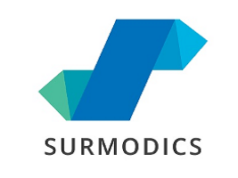
At the LINC congress, Sumaira Macdonald, Freeman Hospital, Newcastle, UK, spoke about the new MICHI (Silk Road Medical) direct carotid access system, presented data to support the technique and stated that this system integrates the benefits of both carotid endarterectomy and carotid artery stenting.
Macdonald said that the potential with this technology is to solve the remaining problems of carotid artery stenting and endarterectomy. She commented that “even experienced carotid surgeons, who perform a procedure that has undergone 60 years of refinement, within the remit of a randomised controlled trial, see complications with endarterectomy. Myocardial infarction occurs more significantly compared with carotid artery stenting, and this has significant mortality implications up at four years. In addition, cranial nerve injury, as seen in CREST, remains unresolved in 2% of the cases at six months.”
She added that carotid artery stenting is a more patient friendly procedure, but that it is also known that it incurs more periprocedural minor strokes than endarterectomy. “We simply cannot just overlook and ignore this; it has to be addressed,” she said.
Macdonald gave examples of ongoing subclinical concerns with stenting. The ICSS study, she said, randomised 1,713 symptomatic patients between endarterectomy or stenting. A subset analysis of 231 patients evaluated new white lesions on DW-MRI of the brain before and after intervention. “New white lesions were seen in 17% of patients after endarterectomy. This is exquisitely good, compared with 50% after transfemoral filter protected carotid stenting cases,” she noted.
Recently, further evaluation of the subset looked at lesion volumes of brain affected in endarterectomy vs. stenting patients. There were a large number of smaller lesions following stenting and fewer larger lesions following endarterectomy, meaning that in total, the affected brain volume in both patient populations was the same.
Data will be presented this year on this subset, Macdonald said, which evaluates recurrent transient ischaemic attack or stroke, cumulative up to five years, after new DW-MRI lesions of brain. “In carotid stenting patients, those patients that were positive for new white lesions had more events in five years than those who had negative DW-MRI scan. We cannot ignore them, even though these were simply transient ischaemic events rather than stroke events. We did not see that pattern in endarterectomy,” she noted.
Another example was a non-randomised prospective analysis (Naren Gupta et al. JVS 2011) that looked at 41 patients undergoing stenting with distal filter protection, stenting with flow reversal, and endarterectomy. Endarterectomy had better results than carotid stenting in the control of microembolic signals on transcranial Doppler. Flow reversal was better than filter protection in the control of the microembolic burden.
MICHI Neuroprotection System
Macdonald explained that the MICHI Neuroprotection System consists of a 10F outer diameter arterial sheath, and a 10F outer diameter venous return sheath, with a flow controller in between, and a wide bore low resistant arteriovenous shunt circuit connecting the two. The arterial sheath is inserted through a supraclavicular mini-incision of 2cm between the two heads of the sternomastoid muscle. The system can affect very high flow rate flow reversal as a result of the low resistance offered by the extracorporeal circuit. The system enables high flow rate or low flow rate or stop flow for contrast injection. It also allows the operator to affect flow reversion without manipulation of the external carotid artery, “which is not the case with other proximal embolic protection systems available,” Macdonald said.
First-in-man data from the PROOF trial for 44 patients (mean age 72 years, 40% females, 16% symptomatic) were published by L Pinter et al in the Journal of Vascular Surgery in 2011. Seventy five patients have been enrolled in the PROOF study, and 180 patients have been treated worldwide with the MICHI system.
Procedural data for the 75 patients treated in the PROOF study has shown procedural success at 90.7% and tolerance to reverse flow of 100%. Time on high flow was 12±17.4min. Thirty days post procedure there were no major events, only one case of contralateral minor stroke, but this was adjudicated not to be related to the procedure or the technique. There were two cases of cranial nerve injury, and these have led to hoarseness, Macdonald told delegates.
She said that it can be expected that cranial nerve injury rate will be lower with this incision for the hybrid procedure of the MICHI system rather than for a classic endarterectomy.
Macdonald added that the DWI substudy of PROOF showed a 19.6% rate of patients with new DW-MRI lesions, “very comparable with the excellent control of the microembolic pattern that we saw with endarterectomy in the ICSS substudy”.
The Silk Road clinical programme includes the completed first-in-man study (PROOF) with 75 patients; the LOTUS trial of symptomatic, elderly patients, taking place in Newcastle, UK, which is currently enrolling; the TESLA multicentre EU post-market registry of 56 patients, also completed, and the ROADSTER US pivotal IDE study, with 140 high-surgical risk patients (currently enrolling patients).
In conclusion, Macdonald said that the MICHI system represents the potential for a paradigm shift in the management of carotid artery disease. “The early results are encouraging and would appear to be reproducible. The MICHI system has the potential to offer the ‘best of both worlds’ as a hybrid procedure, mitigating against the DW-MRI lesions that carotid stenting incurs and myocardial infarction and cranial nerve injury after endarterectomy. Ongoing scrutiny is necessary.”












